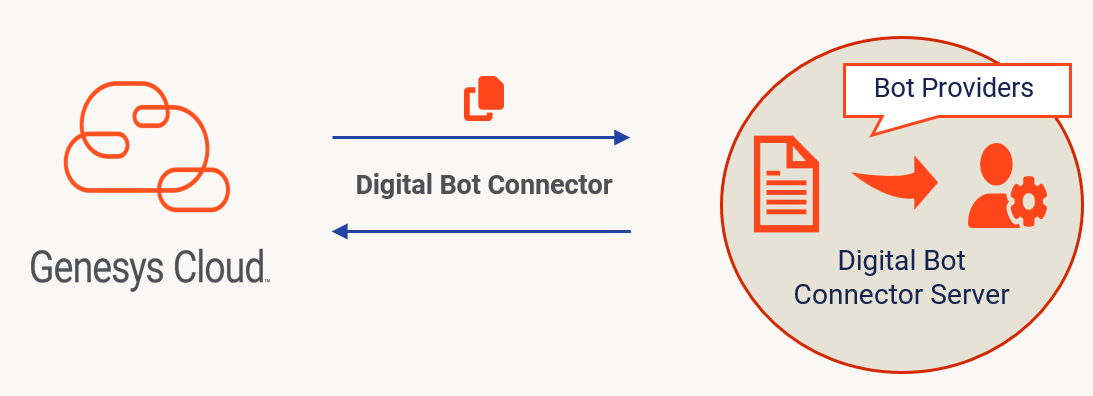Genesys Digital Bot Connector overview
The Genesys Digital Bot Connector configuration allows your third-party bots to interact conversationally with customers. Digital Bot Connector allows the third-party bots to communicate asynchronously with customers. This feature enables bots to keep the communication channel open for longer and converse with customers more naturally, as opposed to interacting in a request and response pattern.
- Genesys Digital Bot Connector pricing differs from Bot Connector pricing. The pricing model meters per request to the Genesys Digital Bot Connecter APIs, counting every message that agents send and receive.
- Implement new integrations for third-party bots through the Digital Bot Connector. Genesys recommends using the Digital Bot Connector for digital interactions particularly.
To get started with Digital Bot Connector, see Configure the Genesys Digital Bot Connector integration.
Advantages of Digital Bot Connector over Bot Connector (legacy)
Though Digital Bot Connector serves a similar purpose to Bot Connector, the next-generation connector has the following advantages:
- Asynchronous communication: Allows bots to keep the communication channel open for longer and converse with customers more naturally. This feature paves the way to implement use cases such as a bot that:
- Sends order fulfillment status updates at regular intervals
- Allows interruptions when customers want to change or add more to the previous request
- Accepts iterative requests (multiple messages that form a single customer request)
- Waits patiently for a customer to enter relevant data such as a credit card number Note: As Digital Bot Connector is asynchronous, Genesys Cloud cannot guarantee the order of messages during processing or delivery.
- Improved rich media support: Allows bots to send images, rich text, and file attachments such as PDFs to customers. However, customers can only send text messages to bots.
- Improved security: Enables secure communication with third-party bot providers using an MTLS (Mutual Transport Layer Security) authentication system. The mTLS authentication is optional.
- Multilingual support: Passes the language of the current text to downstream services.
Recommendations for reliable message delivery
The underlying architecture and messaging stack for Digital Bot Connector are asynchronous, distributed, and multi-service. Even when Digital Bot Connector processes messages sequentially and without cold starts, the upstream services can introduce natural variance due to queuing, load balancing, and parallel distributed execution. In practice, this means that Genesys Cloud cannot guarantee the order of messages during processing or delivery.
The recommended mitigation approach is to implement a client side (or customer middleware) spacing between messages and to use progressive bot loading for faster initial bot configuration.


